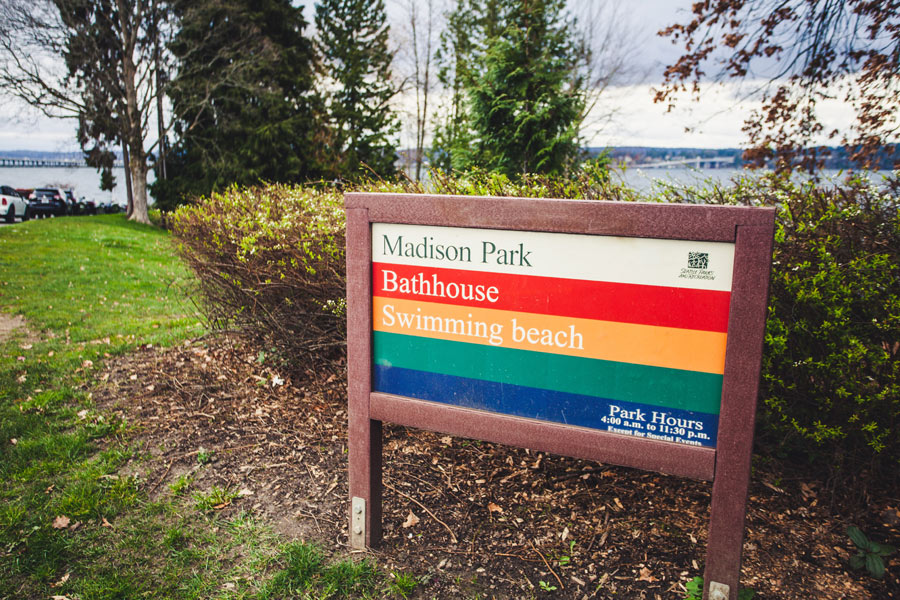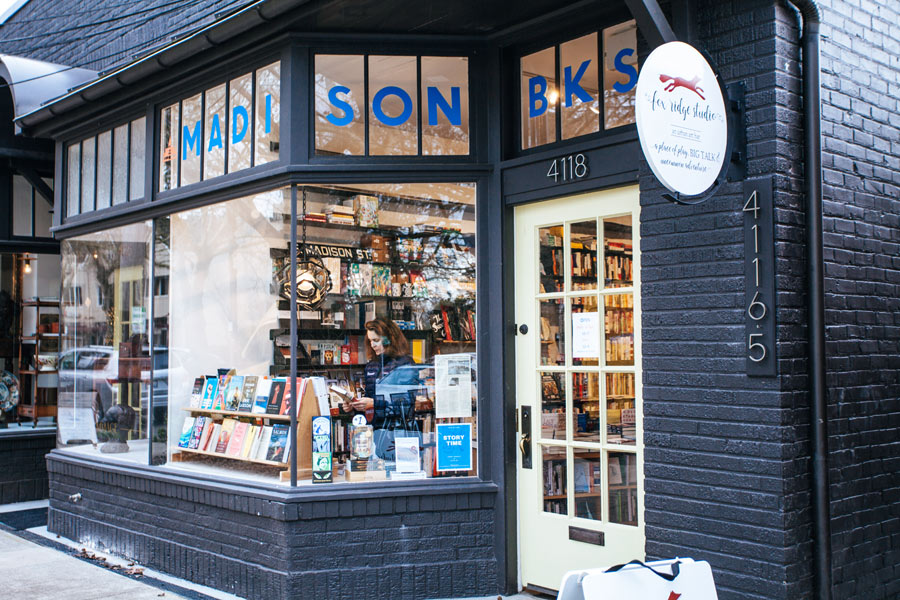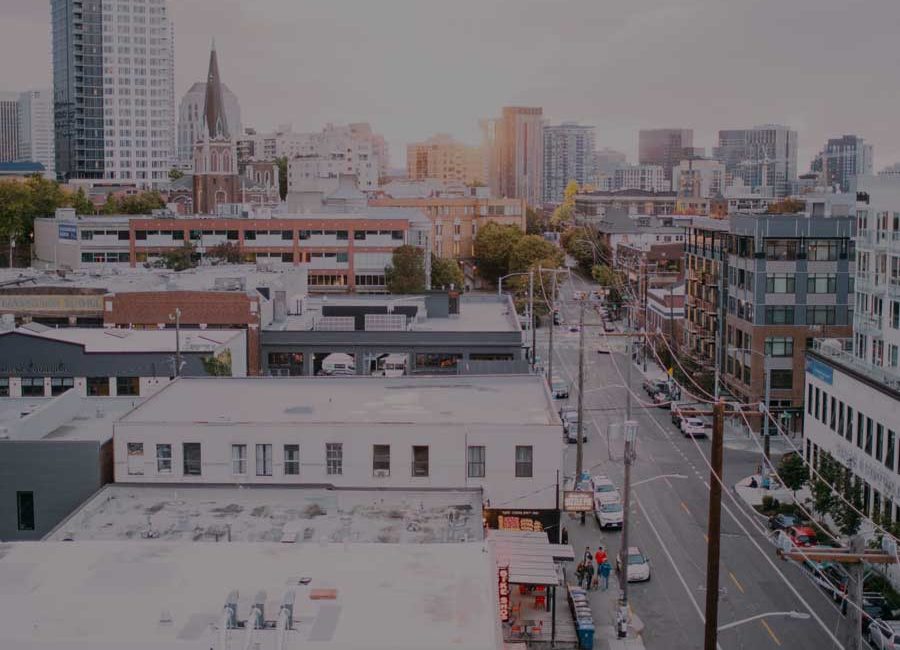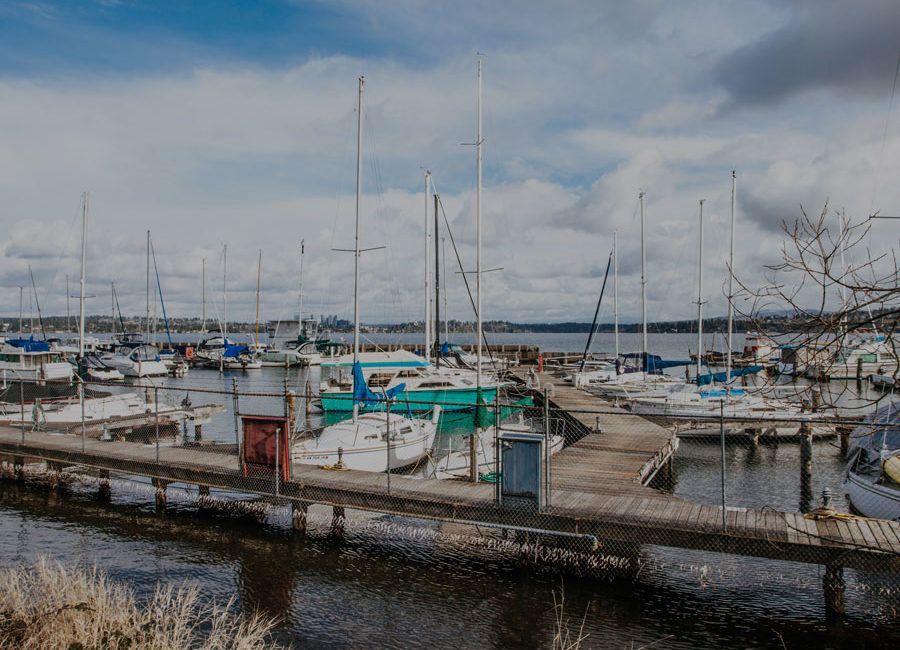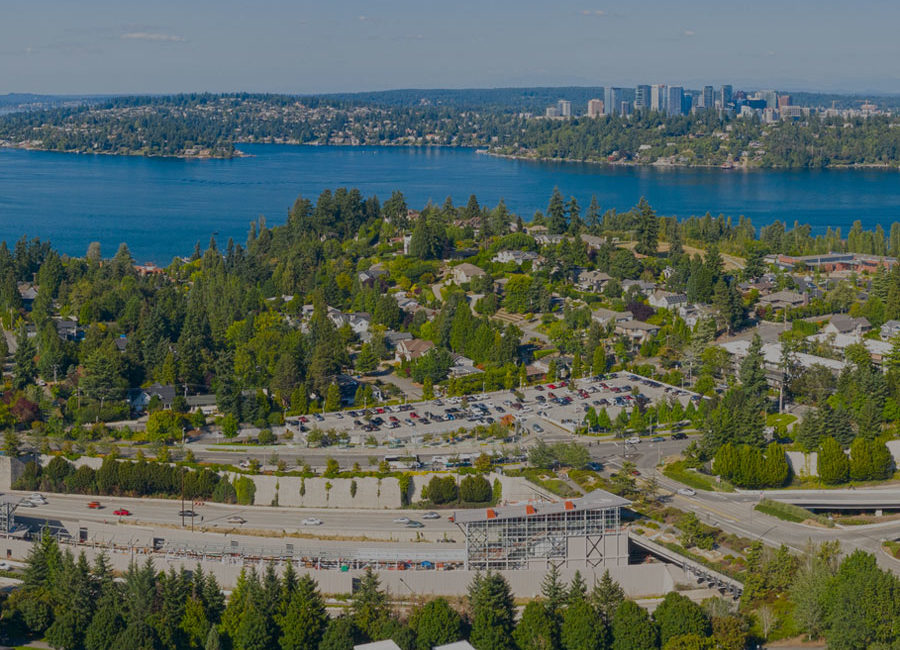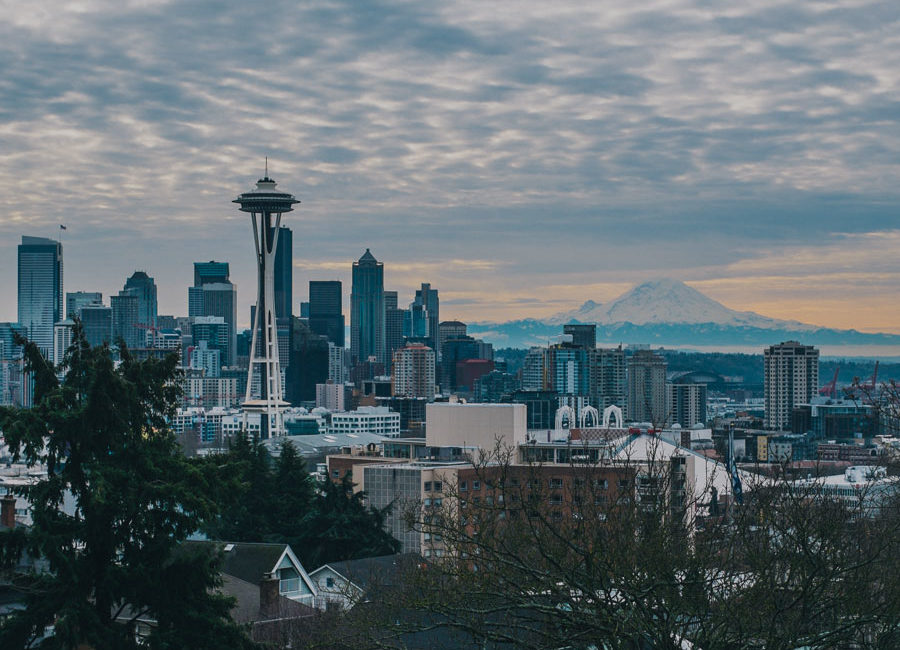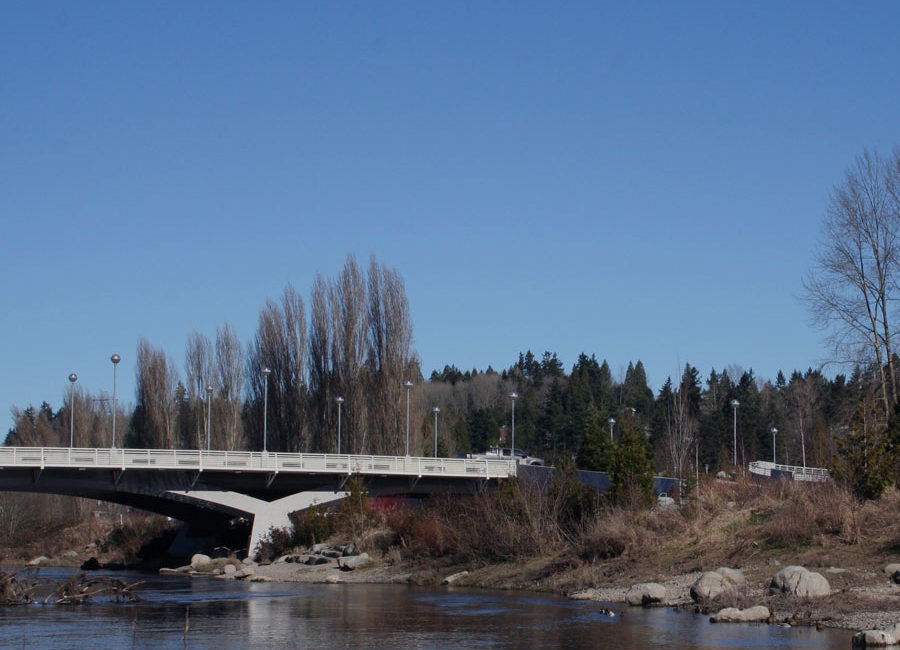Madison Park: A Cozy City
Hamlet Beside Lake Washington
Madison Park is a mid-city oasis located snugly between Capitol Hill and Lake Washington, with direct access to Downtown via E. Madison Street. It’s a beautiful and somewhat small neighborhood, which overlaps Denny-Blaine and Madison Valley by way of the main street passing through.
There are several cute boutiques for shopping, a fully stocked neighborhood market at Bert’s Red Apple, and plenty of delicious spots to grab a bite to eat at anytime of day. Enjoy brunch or breakfast at the relaxed Madison Kitchen or Madison Park Bakery, and enjoy lunch or dinner at chill neighborhood spots like Mad Pizza or Cactus. If you’re in the mood for something different, hop in the car for a five-minute drive up E. Madison to Madison Valley, where you’ll find high-end French fare at Luc Bistro, Basque tapas and Spanish wines at The Harvest Vine, and Tuscan small plates and handmade pastas at Bar Cantinetta.
The neighborhood is personified by its beach and play area, which provide residents and visitors with space to enjoy Lake Washington and water recreation during the summer. Year-round, Madison Park offers amazing views of the lake and a cozy, small-town ambiance for people looking for a little bit of peace and quiet and community feeling.
2019 Data at a Glance
Average Home Price:
$1,600,519
Average Rent:
$1,871/month
Home price trend:
-2.5%
Walk Score (1-100):
68
Number of Parks:
6
Pros of Living in Madison Park
Many of the residents in Madison Park are attracted to the neighborhood for its accessibility to the downtown area and close community. It’s easy to access the busy Capitol Hill neighborhood and from there, Downtown, with a quick drive or bus ride up East Madison Street. At the same time, Madison Park feels like a secluded hamlet tucked away from the city, offering the quiet, small urban town atmosphere that some people crave.
There’s a lot to do in Madison Park, especially in the summer. Take a bike ride along Lake Washington Boulevard to (or through) Leschi, or cycle through the Arboretum and soak up some nature therapy. Pack a picnic or grab your pick from the market or bakery and take it to the Madison Park Beach for a lakeside lunch and a swim, and the kiddos can have a blast on the nearby playground.
Cons of Living in Madison Park
Although Madison Park is very beautiful and lush with greenery and pretty front yard landscaping, there aren’t a lot of parks in the neighborhood, with only a handful of green spaces, including Madison Park itself. However, Madison Park is bordered by the 230-acre Washington Park Arboretum preserve, which is an amazing outdoor collection of plants and wildlife as well as recreational activities. The beautiful Seattle Japanese Garden is also located in the park, with a luxurious garden of exotic plants, a koi pond, benches, and a tea room.
Aside from Bert’s Red Apple Market, there aren’t other grocery stores in the neighborhood and the area doesn’t have much in the way of medical-dental facilities, although there is a pharmacy (Pharmaca Integrative Pharmacy) and Madison Park isn’t far from other neighborhoods where you can get other errands done.
One of the other downsides of living in Madison Park is that transportation to and from the neighborhood can be spotty if you don’t have a car, as there are only two bus routes. But with Lyft and Uber and other alternative transportation options, there are ways to manage this potential hurdle.
History of Madison Park, Seattle
Madison Park was inhabited by the native Duwamish people for many years before white settlers arrived in Seattle in the 1850s. The Duwamish people originally called the area “Where One Chops” and used it for its timber as well as to hunt bear, otter, mink, and deer.
After the arrival of the Denny party in Alki, the history of Madison Park in Seattle has mostly revolved around its outdoor recreation opportunities. Between 1864 and 1865, Judge John J. McGilvra purchased 420 acres of land and developed Madison Street as a straight road directly from Downtown to what would become Madison Park. Madison Park and Madison Street were named for U.S. President James Madison.
However, for 15 years, Madison Park’s only residents were Judge McGilvra and his family. So, he platted most of the area for sale in 1880, and set aside 24 acres for public use and the rest for “cottage”-type residences.
Soon after, people began to flock to Madison Park, especially after Judge McGilvra and others opened the Madison Street Cable Railway Company, which had a cable car route along E. Madison Street that made the area more accessible for visitors as well as residents.
Then, in 1917, the Lake Washington Ship Canal was opened, which caused the water level of Lake Washington to drop nine feet and thus created an extended shoreline around Madison Park — perfect for a beach. So, a bathhouse was constructed in 1919, and in 1922, the park area and beach were transferred to the Seattle Parks Department for management.
Today, Madison Park is a busy place during the summer, as swimmers and sunbathers enjoy the beach and park. Some of the shops and restaurants extend their hours to accommodate the additional customers and longer, sunnier days. During the winters, it’s a quiet and welcoming neighborhood that feels like a nice, peaceful retreat from the city, despite being so close to the heart of it.
Home Prices in Madison Park, Seattle
With amazing views of Lake Washington and Madison Park’s small-town charm, it’s not really surprising that the average value of a home in Madison Park is a bit higher than the Seattle average, at $1,600,519. However, like most of the city, home values in Madison Park have declined slightly in the past year, by -2.5%. Zillow predicts that home values in Madison Park will increase by 0.1% in the next 12 months. While the Seattle average price per square foot is $511, the average in Madison Park is $753.
Most of the homes in Madison Park are single-family residences in historic and turn-of-the-century styles. There are many beach-style homes and bungalows as well, and some Tudor-style residences and a few modern homes that have been built in recent years. Near the northern shore of the neighborhood, there are also a few brick condominiums.
There aren’t many apartment living options in the neighborhood, but on average, a one-bedroom apartment in Madison Park will rent for around $1,871 per month.
Walk Score & Transportation in Madison Park
Although the central area of town is quite flat and walkable, a lot of Madison Park residential areas don’t have many sidewalks and, therefore, the neighborhood isn’t very walkable. It’s the 53rd most walkable neighborhood citywide, with a score of 68. Its bike score is also lower than other parts of the city, with a score of 58. Finally, public transportation to the area is pretty limited, giving Madison Park a transit score of 37.
The low transit score is due to there only being two bus routes in the neighborhood. There’s the 11, which connects Madison Park to Capitol Hill and then to Downtown Seattle, and the 980, which reaches Lakeside at Haller Lake from Madison Valley.
Unique Gems in Madison Park
With several cute and very one-of-a-kind boutiques and dozens of delicious restaurants and cafes sprinkled up and down E. Madison Street between Madison Valley and Madison Park, it’s tough to choose favorites. In addition to the shopping and tasting offerings available year-round, there are also a few summertime events to take part in. The neighborhood celebrates summer each year in July with Madison Park Days, a weekend of sidewalk sales and fun that kicks off with a kids parade and picnic in the park. Then in September, there is the Madison Park Art Walk, where local businesses showcase art by local artists.
The Original Children’s Shop: A Madison Park staple for over 65 years, The Original Children’s Shop is a fabulous boutique for babies’ and children’s apparel. They have adorable outfits and pieces for kids of all ages, and a lot of their offering is also available online. There is also a salon for the kiddos to get their first haircut, complete with books and toys to play with as they (or their little siblings) wait to get their locks trimmed.
Gray & Gray Home: Seattle isn’t always thought of as the best spot to find heirloom pieces and antiques, but if you’re looking for something special, Gray & Gray Home is the place to go. The owners reportedly have great eyes for interior design, and will help you find the perfect pieces for your home. The store is stocked with a constantly changing collection of everything from unique Italian or French pieces, rattan furniture, XIX century pieces, modern lightning, and other home decor accents. They also do custom upholstery.
Madison Books: While Amazon has quickly taken over as the location of convenience for many book shoppers, independent bookstores are still very much alive and important for Seattle readers. Madison Books is open daily and has a great offering of classics, trending bestsellers, works by local authors, and more. They also have a portal for accessing and downloading their audiobooks.
Hanok Asian Eatery: For home-cooked Korean dishes with rave reviews, look no further than Hanok. Owned and operated by a husband-and-wife duo, this Asian-fusion restaurant is small with only a few tables, but its flavors are big and delicious. Yelpers recommend their bibimbap, kimchi jjiggae, tteokbokki, and chicken katsu.
The Independent Pizzeria: Since 2010, The Indie has been a cozy neighborhood spot with wood-fired pizzas, antipasti, and yummy salads and antipasti, as well as a rotating selection of wines and craft beers. Their pies range from classics like a margherita (“Queen” on their menu) to specialties such as the Roman, with spinach, mozzarella, pecorino, artichoke, and garlic.


